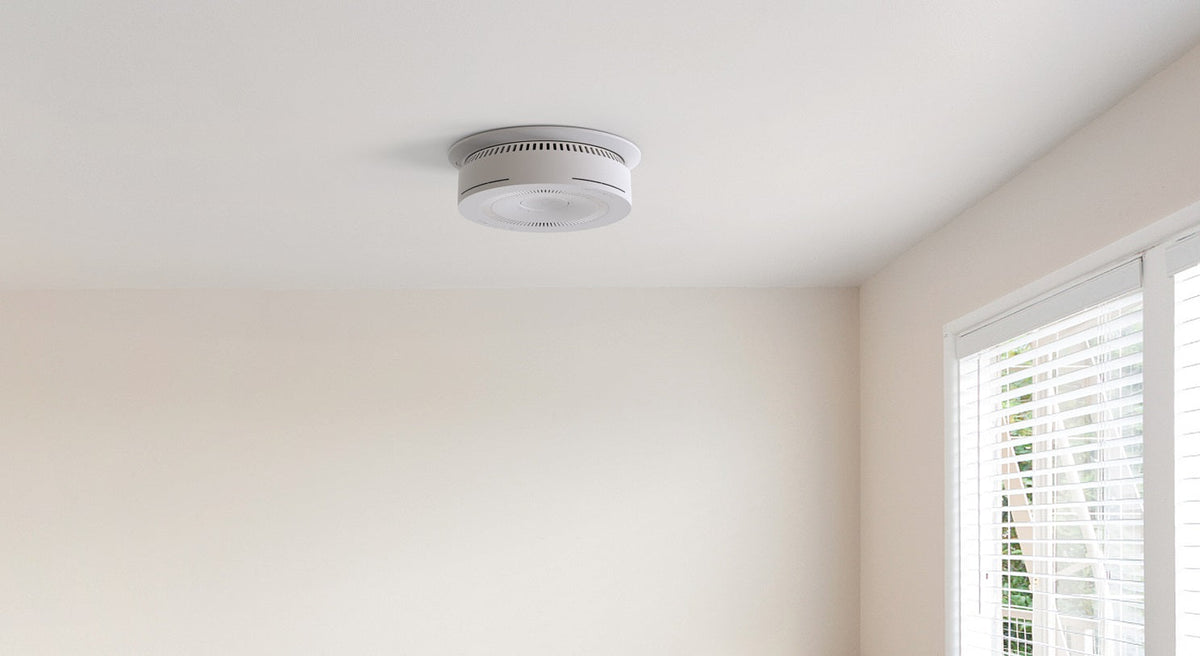
Where to Place a Smart Carbon Monoxide Detector?
|
|
Time to read 3 min
|
|
Time to read 3 min
Picture this: a quiet evening at home, with your family cozily tucked in for the night. While you may be aware of the usual household hazards, there's a silent intruder that often goes unnoticed until it's too late – carbon monoxide (CO). This colorless, odorless gas can seep into your home and pose a grave threat to your well-being. Fortunately, there is a solution that can be your guardian in such situations. Where to install a carbon monoxide detector to ensure its optimal functioning?
Before we embark on the quest to find the perfect spot for your CO detector, let's take a moment to understand the gravity of the situation. Carbon monoxide is a byproduct of incomplete combustion from sources like gas, wood, and oil. When inhaled, it binds to your red blood cells, robbing them of vital oxygen. Symptoms can range from dizziness and nausea to confusion and, in severe cases, even fatalities. Early detection via a carbon monoxide detector is your ticket to safety.
Your sleeping quarters are a top priority when it comes to placing a carbon monoxide detector. Why? Well, when you're in dreamland, you're less likely to notice the initial signs of CO poisoning. So, installing a detector close to bedrooms ensures you get an early wake-up call if there's a CO issue, giving you a fighting chance to escape unscathed.
Where should a carbon monoxide detector be placed? It's a good rule of thumb to have a carbon monoxide detector on every floor of your home, because CO can behave unpredictably, accumulating in pockets. This becomes especially important if your abode boasts a basement, which can be a magnet for CO buildup.
Another wise move is to install detectors close to fuel-burning appliances, such as furnaces, water heaters, and gas stoves. These everyday devices are often the culprits behind CO leaks. Having a detector nearby means it can quickly detect any hiccups and sound the alarm.
While we're on the subject of the kitchen, consider placing a detector in this bustling hub of culinary delights. Carbon monoxide can rear its head during cooking, especially if you're working with a gas-powered oven or stove. Having an extra set of electronic eyes in the kitchen can be a lifesaver.
If your home features an attached garage, don't forget to extend your safety net there as well. Vehicles emit carbon monoxide, and it can infiltrate your living spaces through shared walls or ventilation systems. By monitoring CO levels in the garage area, you can nip potential hazards in the bud.
Need an extra tip? Pay attention to the height. Where to place a carbon monoxide detector? Mount your device on a wall at eye level. Why? CO tends to mix with the air and rise, so this height ensures your detector can capture it effectively. Steer clear of extremes – not too close to the ceiling and not too close to the floor.
While you're on a mission to fortify your home against CO, be mindful of some placement pitfalls:
Securing your home with smart carbon monoxide detectors and positioning them thoughtfully is like having a silent sentinel to safeguard your loved ones.
Where to place a carbon monoxide detector? Install it near sleeping areas, on every floor, close to fuel-burning appliances, in the kitchen, and within the confines of attached garages. And don't forget the sweet spot for mounting – at eye level. By following these guidelines and steering clear of placement pitfalls, you can rest easy knowing you've taken a proactive step in defending your family against the hidden menace of carbon monoxide.
